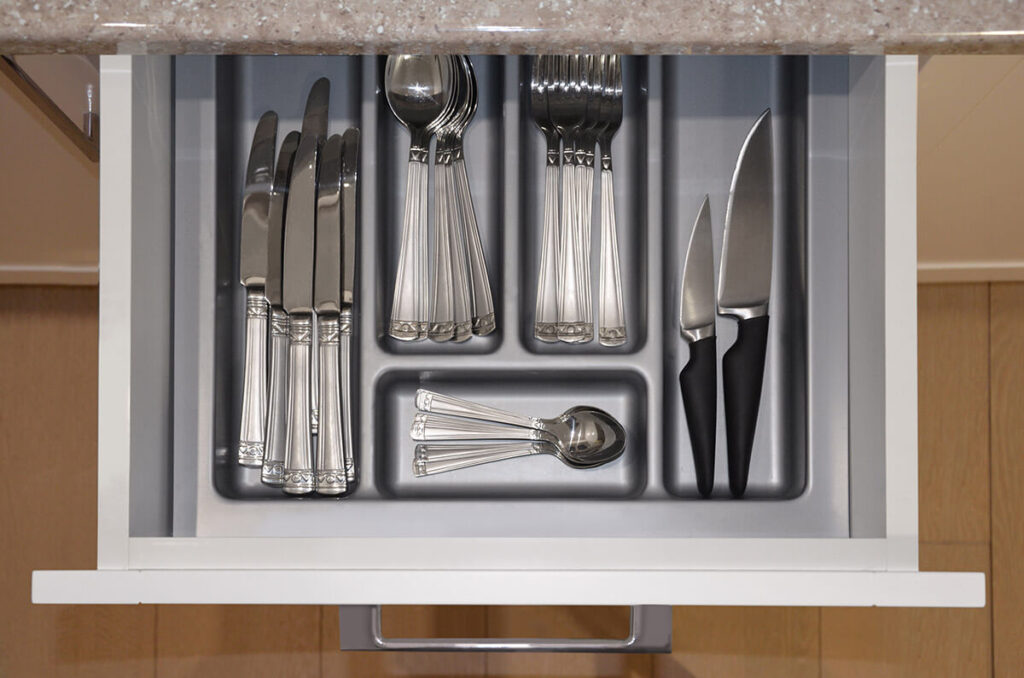Our northern neighbor, also known as the Great White North, is famous for its hospitality towards newcomers, but also towards our animal friends. Thus, anyone who’s planning on moving to Canada with pets and has a question like can I bring my dog to Canada can relax. You can enjoy all activities together with your four-legged companion(s) here. You’ll be able to bring them pretty much anywhere once you settle in your new home. Still, taking pets to Canada will require specific processes related to documentation. Keep reading to find out more and see which cities in Great White North are the most pet-friendly.


By landmass, Canada is the second largest place in the world and has the longest coastline. The whole area is composed out of 10 provinces and three territories, with Ottawa being the capital city. This is also the first country in the world that embraced diversity and pluralism by adopting a policy of multiculturalism. It’s actually home to people from more than 250 ethnic origins. Great White North is also multilingual with two official languages: English and French. If you decide to relocate internationally to a French-speaking area, our advice is to find some easy tips for learning a new language that will help you break the language barrier. The official currency is the Canadian Dollar (C$). And now that you have the basics, let’s get back to the topic at hand – moving to Canada with pets.
Moving to Canada With Pets: What You Need to Know
If you can’t leave your beloved pet(s) behind when moving to Canada, you’ve come to the right place. We won’t lie – international relocation is challenging, especially with pets. On top of that, we are living with the coronavirus pandemic at the moment. Yet, moving across the world or to a neighboring country with our beloved animals doesn’t have to be that stressful. Here are some starting guidelines to help you figure out where to start when bringing dogs into Canada (or any other pet for that matter):
- You should contact your chosen airline and ask about their specific guidelines and rules about flying with a pet.
- Number of documents needed to travel abroad is vast for animals, and one of the required ones is the health certificate. You’ll probably be asked to show it when entering the country. Go to the Canadian Food Inspection Agency (CFIA) website to find the permit application.
- You should ensure that the carrier is big enough for your animal to stand, turn around, and lie down. You don’t want your furry friend to dehydrate, so ensure ventilation and water spout. For more detailed information, visit the International Air Transport Association‘s guidelines.
- Pet owners who have to travel longer must make sure there’s always enough water and food. If you aren’t booking auto transport services for shipping a car overseas and intend to drive to your new home, make sure to have regular stops and walk around with your furry friend. Also, know that all food that enters Canadian borders has to be in a sealed bag, commercially packed, and from the US. Also, that bag should not weigh more than 44 pounds.
- If you do not comply with vaccination requirements and don’t have all the relevant paperwork, know that the animal will have to be quarantined.
How to Bring Cats, Dogs, and Other Pets to Great White North
Before we start, know that the CFIA manages the largest number of animal entries. They established import rules for animals and animal products entering Canadian borders. Let’s see the requirements for entering Great White North.
Pet animals entering Canadian borders must have a rabies vaccination certificate or a veterinary certificate. Canada Border Services Agency (CBSA) must also perform a visual inspection in order to ensure that the vaccination is current. You’ll probably be sent to complete more checks.
No matter the animal, rabies vaccination certificate should be:
- Written in either English or French
- A licensed vet should issue and sign it
- It should identify your animal (breed, color, sex, and weight)
- Proof of vaccination against rabies
- Indicating the vaccination date
- Indicating vaccine serial number
- Specifying the immunity duration
The veterinary certificate — written in either English or French and issues and signed by a licensed vet — should contain the following information:
- Your animal’s breed, color, sex, and weight
- The fact that your animal had been in the exporting country either six months before relocating to Canada or since birth
- The fact that your animal didn’t suffer from rabies in the exporting country either six months before relocating to Great White North or since birth
Can I Move to Canada With My Cat
If you have a cat and are looking to relocate internationally, you’ve probably asked yourself, can I bring my cat to Canada? The short answer is yes. Since you’re relocating from a country with a low incidence of rabies, you must prepare a rabies vaccination certificate or veterinary certificate which declares it. To ensure that the vaccination is current, CBSA will have to perform a visual inspection too. At their discretion, you might be required to complete additional inspections, which may incur over $30 (around $23) and tax fees.
Can My Dog Move to Canada With Me: Documents Needed for Moving With a Four-Legged Companion
Are you about to immigrate to Canada, asking yourself this question—what do I need to take my dog to Canada? Your puppy will have to go through visual inspection from the CBSA. As an owner, you have to contact CFIA before the travel. Remember to bring a rabies vaccination certificate.
Finding out the cost of living in Canada, is one thing. But do you know how much does it cost to take a dog to Canada? Taking a dog to Canada will cost you around C$30 (around $23) plus tax. This is the fee for those dogs who fulfilled all the requirements. If your four-legged friend doesn’t meet the requirements, you’ll have two weeks to get them vaccinated and bring the paperwork to CFIA. You’ll have the vaccination fees in addition to the entry costs of C$55 (around $42) and tax.
Travel Internationally to Gre t White North With Birds
If you’re relocating with birds, you’ll need a declaration sign stating that they had been in your possession for the last 90 days and were not in contact with other birds during that period. Also, make sure you have a declaration about not intending to resell them. The bird has to be found healthy at the time of inspection. Anyone relocating internationally from countries that are not free from pathogenic avian influenza are forbidden to cross the border with their birds. Since you’re coming from the US, you won’t have this problem.
Crossing Canadian Borders With Ferrets and Rodents
If you’re traveling with ferrets from the US, you’ll need to obtain a proof of the rabies vaccination signed by a licensed vet within a year of issue.
Rodents (gerbils, guinea pigs, rats, mice, chinchillas, and hamsters) do not need a health certificate, an import permit, or visual inspection when entering Great White North.
What if I’m Traveling With a Rabbit?
Domestic rabbits relocating from the US have to be presented to CBSA staff upon entry. Yet, there are no import permits or health certificate requirements. If you need advice on how to fly internationally with your pet rabbit, be sure to click on the video below.
Rules and Regulations About Pet Food Imports
You can bring no more than 44 pounds of food and treats for your animal friend. Apart from the weight, make sure to meet the following requirements:
- Treats or food has to be bought in the US, to be unopened, and commercially packaged
- The food must be in possession of the passenger at the time of entry
- The animal must accompany its owner at the time of entry
- That food can feed only the animal that accompanied the passenger


Dog-Friendly Cities in Great White North
Great White North is one of the friendliest countries in the world regarding dogs or any other animal friend you might have. Now that we covered all the practical aspects of relocating with your beloved animals, let’s see some of the best places to live in Canada with them.
Your Pets Can Enjoy Outdoor Activities in Ottawa
If you’re still thinking where you could relocate, consider moving to Ottawa. Apart from being one of the best places to live abroad with family, there’s a long list of dog-friendly amenities and things to do in Ottawa. Canada’s capital city also has many green spaces where you can spend your spare time with your animal friend. Among the most popular ones is Bruce Pit, a vast park with beautiful forest trails. When you start living in Ottawa, you’ll also find many dog-friendly businesses such as sitters, photographers, and even pet cleaners who are specialized in cleaning their mess.
Toronto Is Perfect for Those Who Have Kids and a Four-Legged Pet
If you’re moving with kids, you should consider Toronto. Some Toronto neighborhoods are particularly kid-friendly with some of the best schools in the area. And living in Toronto means being in a dog-friendly environment as well. The city is full of designated dog parks with miles of off-leash areas. You’ll also find beautiful beaches dedicated to our four-legged companions. The most popular and largest off-leash beach in the area is Cherry Beach.
Move to Montreal if You’re Looking for a More Affordable City
Moving to Montreal, Canada’s cultural capital, means being surrounded by exciting festivals, fantastic gastronomy, and many pet owners. Some of the best neighborhoods in Montreal can offer charming places where you can take your dogs out for a walk. For example, there’s alluring Parc Lafontaine and charming the Lachine Canal. You can also find Montreal Dog Blog and keep up with the newest things to do in Montreal with your dog(s.) If you’re on a tight budget, know that Montreal is probably the cheapest place to live in Canada. It’s even more affordable than some of the biggest European cities. Figure out how to keep in touch with friends and decide to relocate to this beautiful city with your four-legged companion.
Your Beloved Animal Can Roam Free in Calgary
Calgary is probably most remembered for hosting the first Winter Olympics Great White North in 1988. This beautiful city is also known as being very much dog-friendly. If you decide to start living in Calgary, know that you’ll find more than 140 acres of the off-leash area. Outdoor activities are just one out of many things to do in Calgary with your puppy. For example, you’ll find many great pet-friendly restaurants. If you’re moving to another country for love, you and your partner will be able to bring your beloved animal with you to a romantic dinner.


Hire a Reliable and Trustworthy International Moving Company
And that’s all there is about moving to Canada with pets. Now you know what to do regarding your pet’s documentation. Hopefully, this article also helped you decide which city you and your four-legged companions are about to start calling your home.
When you start making relocation plans, be sure to hire efficient and reliable international moving services. Professionals will take care of your move and relieve your moving stress levels. Their experienced and well-trained movers and packers will come fully equipped with boxes and moving supplies and will provide packing services in no time. Remember that you can leave your precious belongings in storage units if your move-out and move-in dates don’t match. While your chosen overseas moving company is handling your international relocation with minimum bother, you can go to your vet and double-check every information on what you have to do to cross Canadian borders with your beloved animal.






